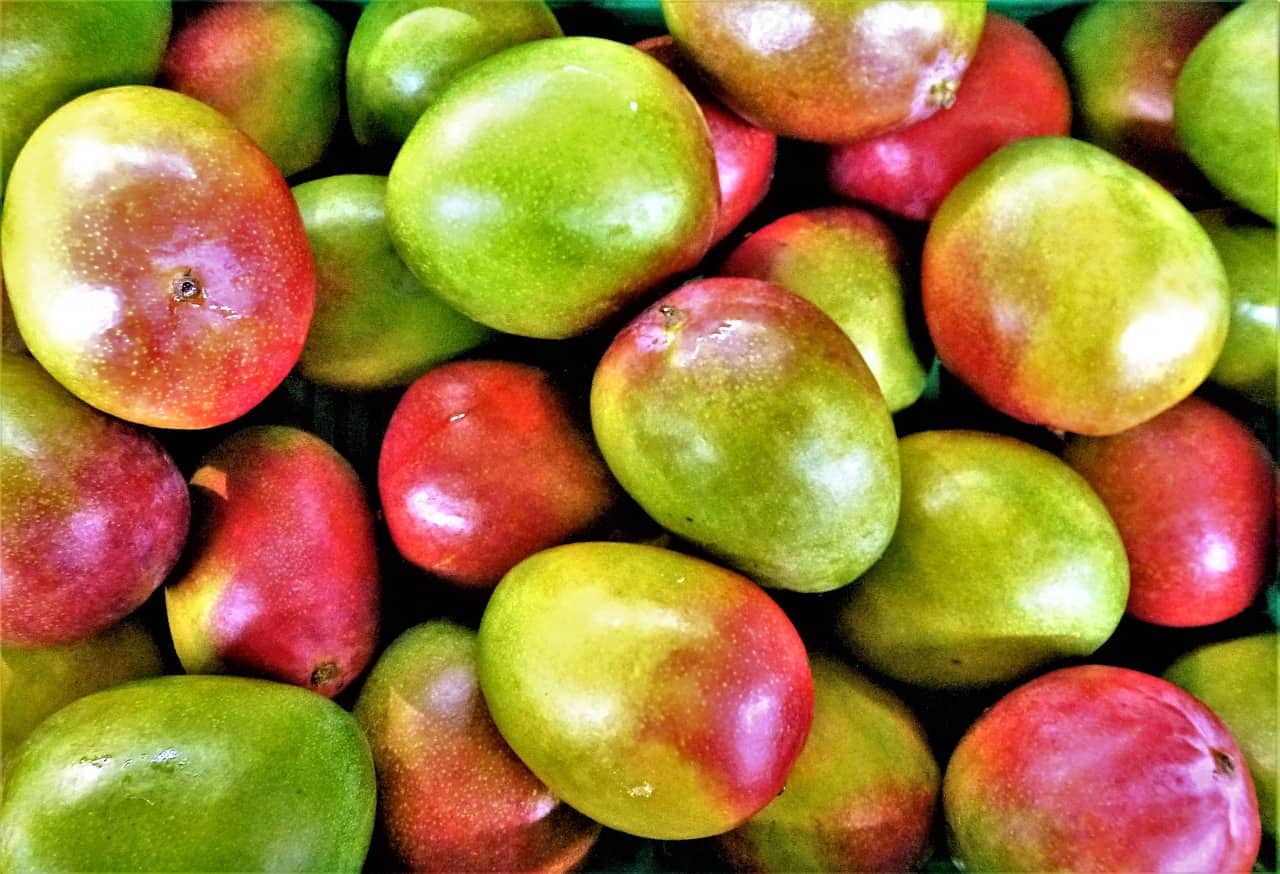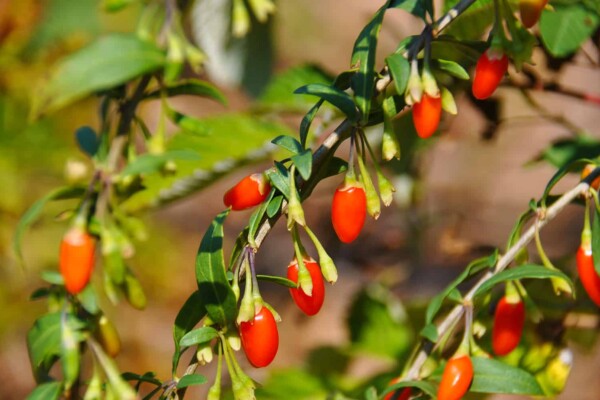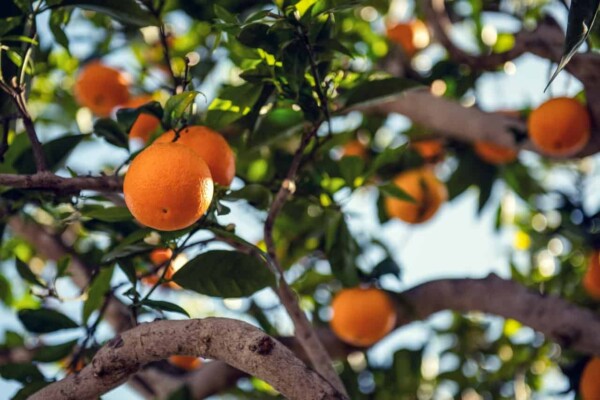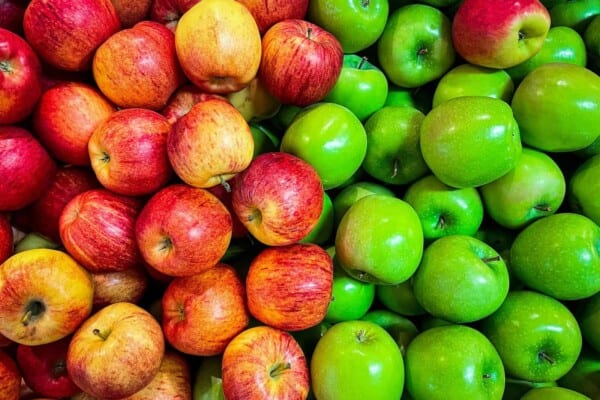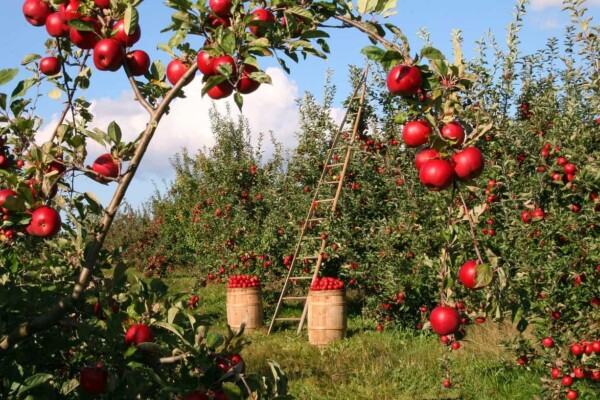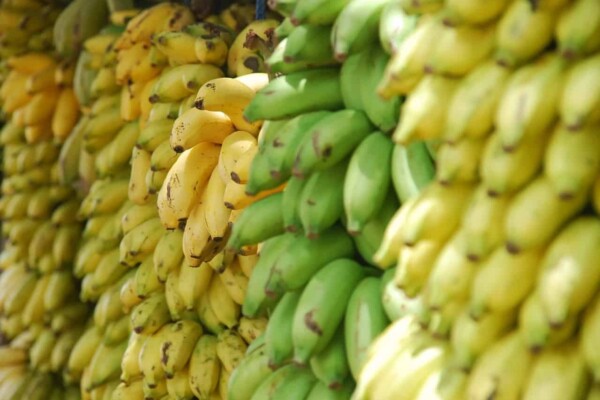Mango is known as “the king of fruits” in Asian regions and belongs to the botanical genus Mangifera, which consists of numerous species of edible fruits from the Anacardiaceae flower family (cashew family). Mango is one of the most popular fruits in India, because its pulp and its juice instantly provide energy during the hot, almost desert climate in India.
General characteristics of mango
Most mangoes are varieties of the species Mangifera indica. The other species of Mangifera produce a lower quality of fruit. Mango is a plant native to the Indian subcontinent. Cultivated in many tropical regions and widespread in the world, mango is one of the most exploited fruits in terms of food, but also in cosmetics, for the juice, aroma, smell and color. It is a common ingredient in the new functional food trend, often referred to as superfruit.
About a thousand varieties of mango are found all over the world, which proves their value to mankind. The mango tree is common in tropical gardens. Ripe, its fruits are a dessert with a rich intake, especially in vitamin A. Fruits also play an important role in maintaining the fauna: birds, fruit bats, insects, and many mammals use it as a source of food.
The genus Mangifera has its origin in tropical Asia. Borneo, Java, Sumatra and the Malaya Peninsula region have the highest number of species of this genus. At present, mangoes are cultivated throughout the tropical and subtropical areas worldwide and have been introduced to the coastal regions of the Pacific Ocean for commercial fruit production.
Mangos are evergreen trees, reaching up to 15-30 m high and with a dome-shaped crown. They grow in a warm, frost-free climate, with dry winters.
They bloom during the coldest period of the year. The flowers grow in inflorescences, with primary, secondary and tertiary branches ranging pale green to pink and red and bearing hundreds of flowers. The mango tree has two types of flowers: hermaphrodites (of both sexes) and only male, both types of flowers found within the same inflorescence.
The proportion of hermaphrodite and male flowers varies with variety and season and is influenced by the temperature during flowering. The male flowers are similar to the hermaphrodite ones, but they lack the pistil.
The leaves are variable in shape and size depending on the variety, but, as a rule, they are elongated with a round tip. New leaves grow in bunches of 10-20 at a time.
The leaves are green in appearance, but they become brownish-red in color as they grow until they reach a dark green color at maturity. The shade of young and growing leaves vary, with shades from pale green to dark purple.
The fruits of different varieties can vary in shape, size, taste, aroma, and texture of the pulp. India produces many varieties of mango for export. Some known Pacific varieties are Ah-Ping, Fairchild, Gouveia, Haden, Kensington Pride, Kopu Reva, Mapulehu, Momi-K, Pope, Rapoza.
Since mango is a very popular fruit, it is used in different ways. The fruits are consumed, practically, in three variants, depending on the variety: uncooked (green mango), ripe (the most common way to eat mango all over the world) and processed (in pickles, chutney, dried slices, canned in syrup, juice, as mango puree or as a paste).
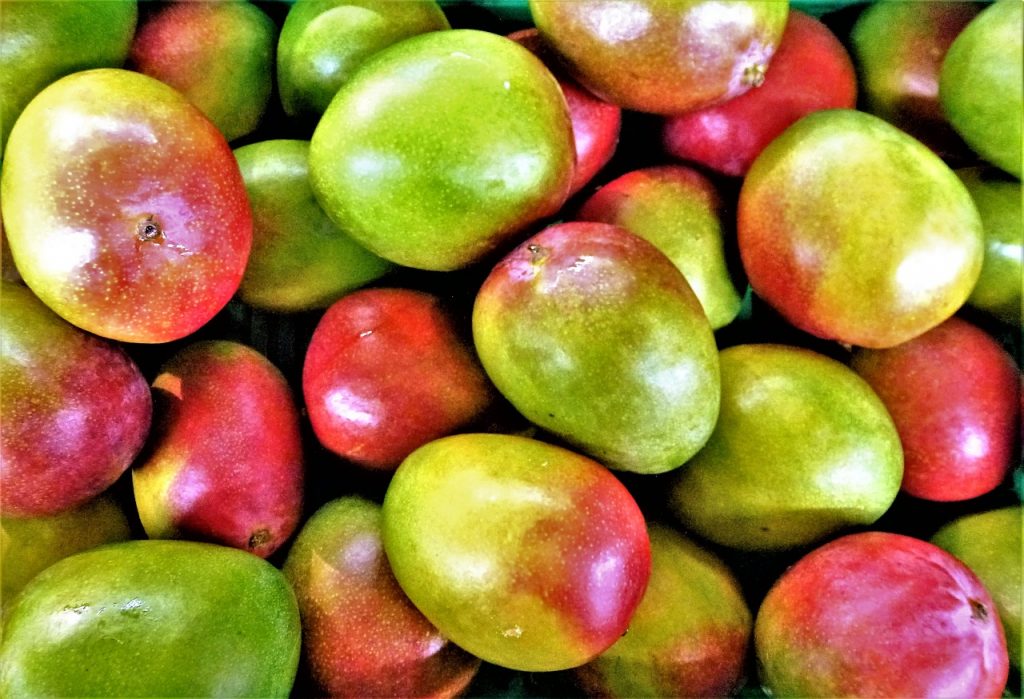
Mango fruits are rich in amino acids, carbohydrates, fatty acids, minerals, organic acids, and vitamins. In the ripe state, fruits contain moderate amounts of vitamin C but are rich in provitamin A and vitamins B1 and B2. The fruits also contain phenolic compounds with antioxidant properties (m-digalic acid, galotanin, phloroglucinol, protocatechuic acid) and flavonoids (kaempferol and myricetin).
The kernel contains alpha- and beta-amirins, galotanin, glucogaline, and several sterols. The leaves contain a triterpene pentacyclic alcohol (indole), taraxone, taraxerol, friedelin, lupeol, and beta-sitosterol, as well as several carbohydrates, citric and malic free acids and some amino acids. Some benzophenone esters, C-glucosides, kinetic and shikimic acids were also found. Mangiferin is present mainly in young leaves and branches.
Mango has a high nutritional value, important therapeutic effects and, above all, a very pleasant taste. Nowadays, mango flavor is added in many products, in fruit juices, ice cream, even in wines, in teas and other foods, but also cosmetics.
Considering that there are so many mango species, it should be noted that only part of them have considerable commercial value and are profitable enough to be grown at a large scale. In the next section, you will find more details about some of the most popular types of mangoes.
The main distinction was initially made between two important families of mango because of their distinctive features, the tropical Asia region and the Indian subcontinent. However, a large part of the commercial mango varieties cultivated today originated from the USA, namely from Florida, where multiple crosses between various types of mangoes were made at the beginning of the 20th century.
Main mango cultivars
In mango orchards, several mango cultivars are often grown together to improve cross-pollination and this is probably the main reason why there are so many types of mangoes out there. India is the biggest mango producer as there are more than 280 types of mangoes grown there, out of which only 30 are some of the well-known varieties.
Another large mango depository is the USA, namely South Florida due to its sunny and warm climate. About 400 mango varieties were and are grown in Florida and many of the mangoes that exist on the market today can be traced back to one or several Florida-based varieties.
Due to its ability to adapt to almost any type of climate, mango is cultivated all over the world and it has become an important commodity for less developed countries. For example, the small island of Nevis, in the Caribbean was once known for its sugar production, but now it is also known for producing mango. There are 44 types of mangoes grown on this island, the fruit is one of the most important sources of income for its inhabitants, asides from tourism and financial services.
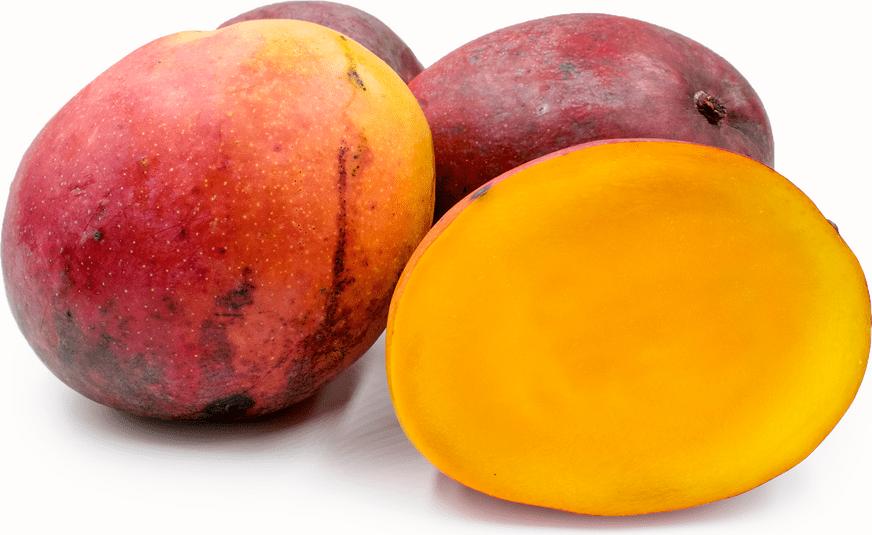
Tommy Atkins mango
Initially bred in Florida around 1922, it was chosen by specialized growers for its productivity, robustness and good resistance to diseases. Although it has medium fiber content, this mango variety can grow and develop under different conditions. The quality of the fruit can deteriorate if too much water or too much fertilizer is used during the growing stage. Interestingly enough, this is the most widespread mango variety in Brazil, where it forms the majority of the exports, especially for supermarket distribution. This variety is very popular with European consumers.
Tommy Atkins mangoes have an oval shape, sometimes slightly oblong. The peel is thick and ranges from yellow to orange and bright red. The pulp has a bold orange color. The fruits have an average weight of 450-710 grams.
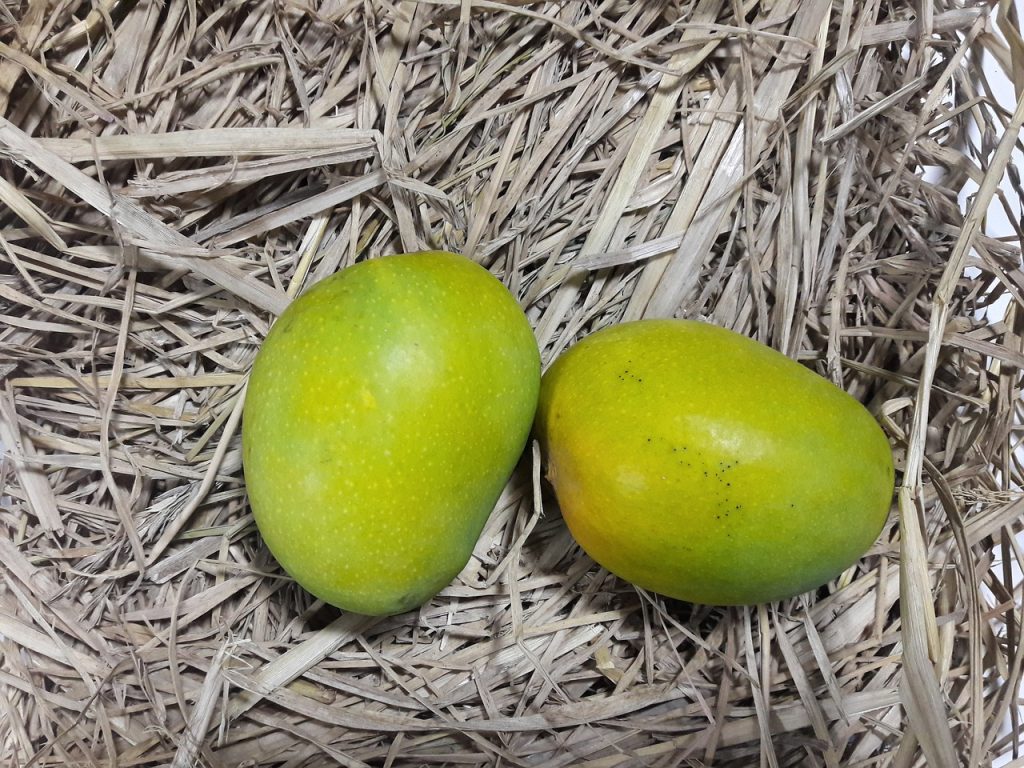
Alphonso mango
Alphonso is considered one of the best types of mangoes due to its flavor, scent, and taste. It’s grown mostly in India because of the favorable climate conditions, but it’s also the most exported type of mango across the world.
However, it’s not as easy to grow this variety because the seed does not grow into a fruit-bearing tree and a special technique is used to produce delicious fruits.
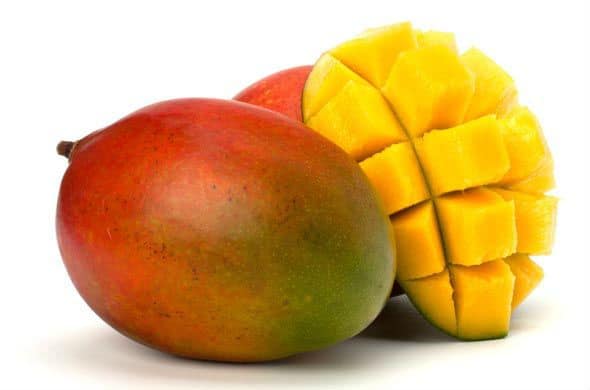
Kent mango
Another Florida-bred variety, Kent was developed in 1932. It bears large fruits, compared with other varieties, which are very much appreciated in several industry sectors. The yields are not that high, but the quality of the fruits is very good, which makes them perfect for export. It’s grown in most countries that supply Europe with mango and is considered one of the most common varieties found on the market. However, there are considerable variations in size and color, depending on the cultivating region.
The fruit has an ovoid shape, with a rounded dorsal part. The peel is thick and strong. It has a greenish-yellow color, with red spots in the parts of the fruit that are most exposed to the light. The pulp has a yellow-orange color, with rich flavor and fibreless texture.
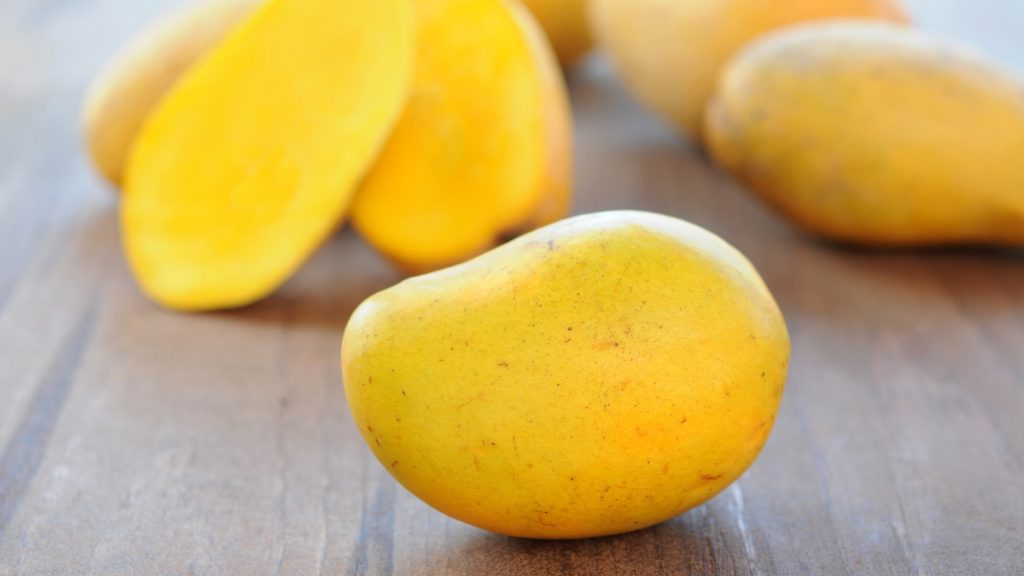
Ataulfo mango
Ataulfo mangoes are primarily grown in Mexico, from March to July and they’re an all-time favorite for salads or just to eat fresh. This mango variety has a very sweet and creamy flavor, a bright yellow color and a small and oval shape. The pulp of the fruit is smooth, firm and it has no fibers.
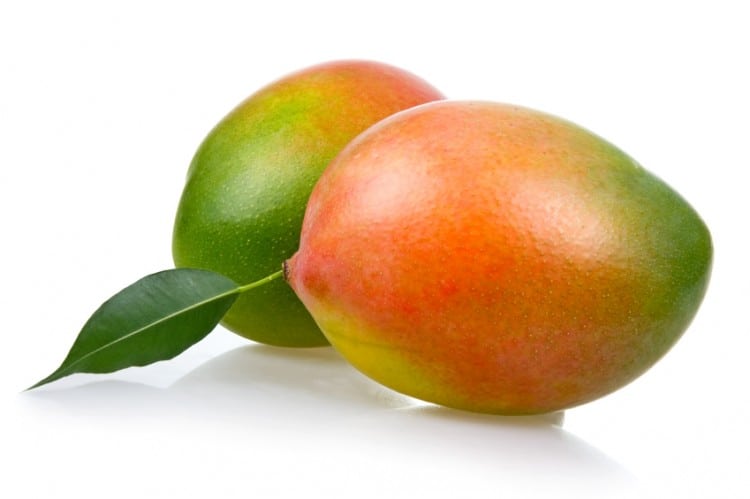
Keitt mango
The variety was grown in Florida, around 1939 and it’s one of the mangoes that offer high yields. The reddish color appears early on the peel, even before the fruit is ripe. This can be a slight disadvantage because inexperienced growers may not recognize when the fruit has reached maturity. Keitt is also one of the varieties suitable for the end of the season, which makes it possible to have enough stock for exports even when there aren’t that many offers on the market. Although it’s not as appreciated as other mango varieties in terms of flavor and taste, Keitt is perfect to fill out gaps between supply sources.
The color of Keitt mangoes varies between orange to deep yellow. The flavor can be best described as fruity; however, the fibers in the pulp are noticeable in the texture. Most consumers don’t find this to be an issue, because the fibers are fine and melt into the texture.
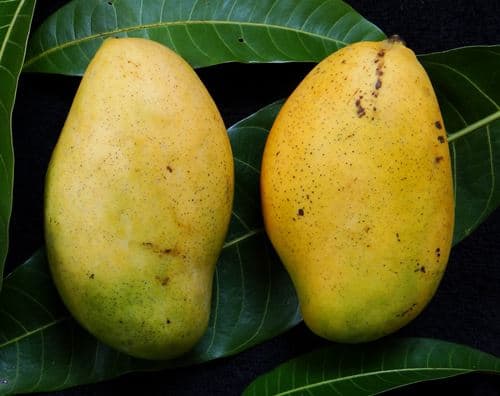
Francis mango
Francis is one of the mango varieties that have an intriguing taste, something between sweet and spicy. It’s cultivated mainly in small mango farms all over Haiti. The fruit is available only from May to July. It has a bright yellow color with some green overtones and an elongated shape.
The pulp of this mango is rich in fibers, so it may not be the most suitable option for salads or raw consumption, but it’s often used in chutney or other mango-based dishes because of its unique flavor.
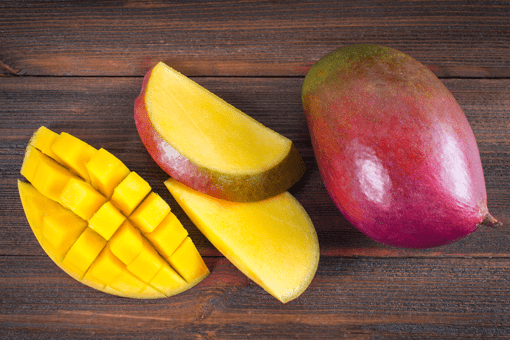
Osteen mango
At first glance, many consumers may not even know that this is a mango variety because the peel has a very dark color, ranging from violet to purple. However, the fruit is yellow, similar to a lemon, it’s firm and juicy and it’s doesn’t have any fibers. Sometimes, Osteen mangoes have a small beak that sticks out from their usually oblong, rounded shape.
Osteen mangoes were grown from Haden seeds in Florida, in 1935. Although they have very good commercial features, they are not grown on a large scale. They have gained some popularity in the European market since the early 2000s, mainly due to the Spanish exports, where this mango variety forms the majority of Spain’s mango production.
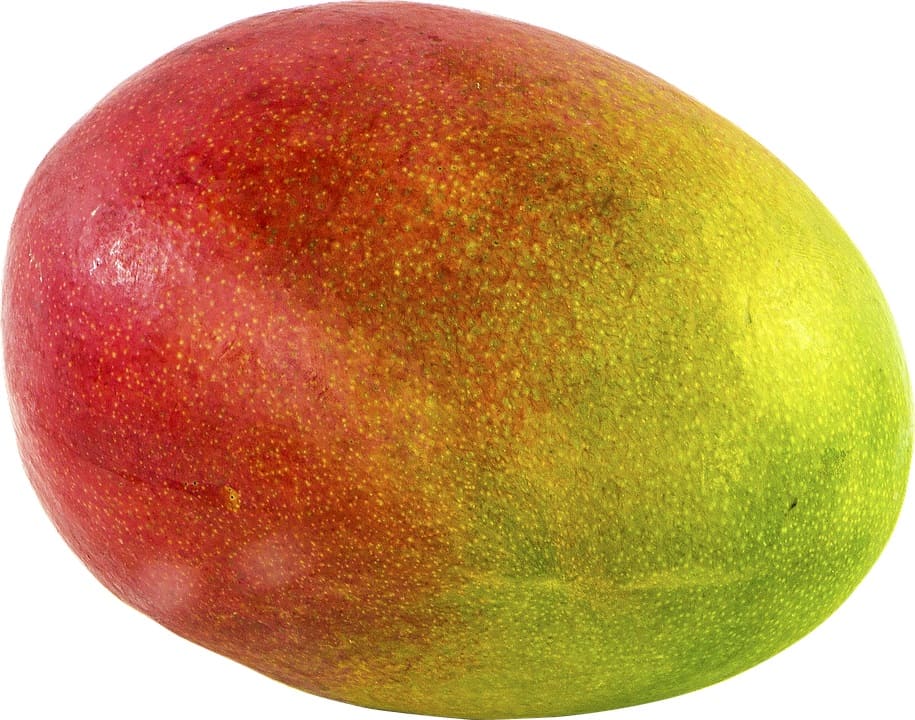
Haden mango
Speaking of the Haden variety, this is another type of mango with very good commercial characteristics. It has a rich flavor, with aromatic overtones, which makes it perfect to be consumed as it is or for cooking. Haden mangoes have a firm pulp with fine fibers. They have a bright red color, with some yellow undertones and small white dots. Their shape is mostly rounded and they are medium to large.
Haden mango is considered a delicacy in Mexico, although its roots can be traced back to Southern Florida, where it was first planted in 1910. It’s considered the mango variety mostly used to develop the entire mango industry in Florida. The fruit is available from April to May.
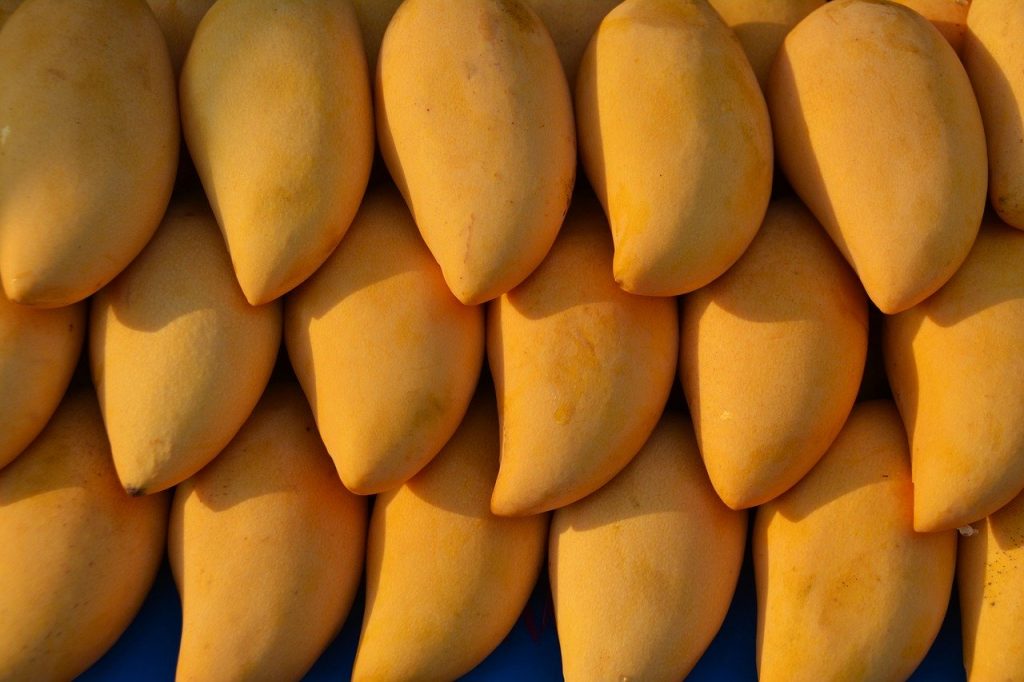
Valencia Pride mango
Despite its name that makes you think of Spain, this mango variety is grown mainly in West Africa. It was developed from the Haden variety in Florida, in 1941. The fruits are large and have an elongated shape. Valencia Pride is considered to have good productivity.
The fruit is mostly appreciated for its deep yellow pulp, which is also practically fibreless, which makes it creamy and having a rich aroma. Due to its “attractive” features, this type of mango is gradually growing in popularity among consumers from all over the world.
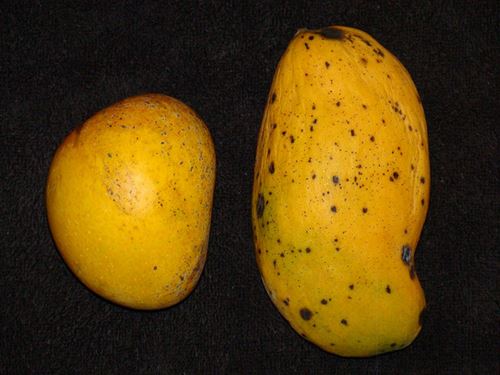
Madame Francique mango
Also called “Desert Mango”, this variety is cultivated in Haiti and is known for its ability to survive in desert climates. The fruits vary in color, from light green to light yellow and orange. They have a rich, sweet and spicy taste, with some tangy undertones, which make them stand out from other types of mangoes.
Madame Francique is available from September to October and is considered the best variety among the ones cultivated in the Caribbean.
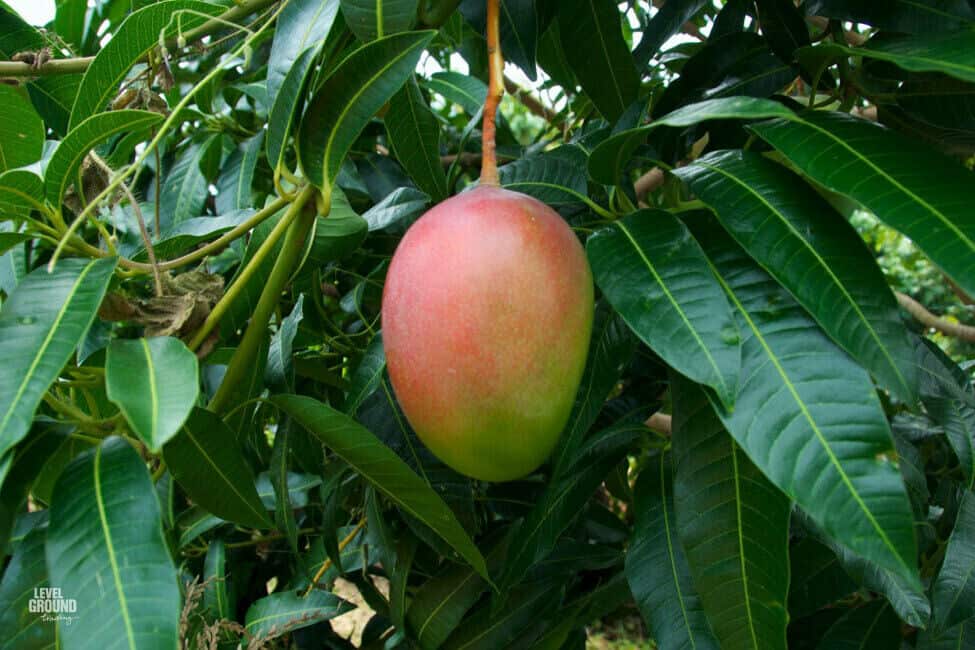
Glenn mango
Another mango variety that originated in Florida is Glenn. This is one of the most popular types of mangoes because it has a sweet and rich flavor, with some peachy undertones. Add the exotic scent into the mix and you have one of the preferred varieties by mango consumers. Glenn mangoes have some light red or pink undertones and an oval to oblong shape.
Overhyped or superfruit? The African mango
Over the last years, there has been a lot of buzz surrounding a certain mango variety, the African mango, which is often marketed as an effective natural weight loss supplement. You may be wondering why the African mango was not included on our list of types of mangoes, but the answer is simple.
African mango is a species in the genus Irvingia, called Irvingia garbonensis. Also known as dika and until some years ago, most of the fruits were harvested from wild trees scattered around Angola, Congo, Nigeria, Uganda and Côte d’Ivoire. It was not grown systematically because it was believed that a dika tree needs around 15 years to reach maturity, so it wasn’t profitable enough for mango growers.
However, it doesn’t mean that there isn’t any interest in this field, especially since the African mango is gaining more and more popularity in the food supplements market. The domestication of dika trees is still in its early stages, as there are several methods to grow these trees in specific orchards, but there is still some trial-and-error involved throughout the process to ensure good production.
Although the status of African mango as a superfood is questionable and it may be just some good marketing strategy behind its popularity, it doesn’t mean that it’s not valuable. In Africa, dika fruits were used for a long time for consumption, including their seeds which are suitable to make edible oil, soap or even for cosmetic products.
Therefore, it is quite difficult to identify which are the best types of mango, given that there are so many varieties, which are now grown in specialized orchards. However, we have included on our list some very popular varieties, but also some that are less known, but which offer great opportunities for beginner mango growers. What is your favorite type of mango?

